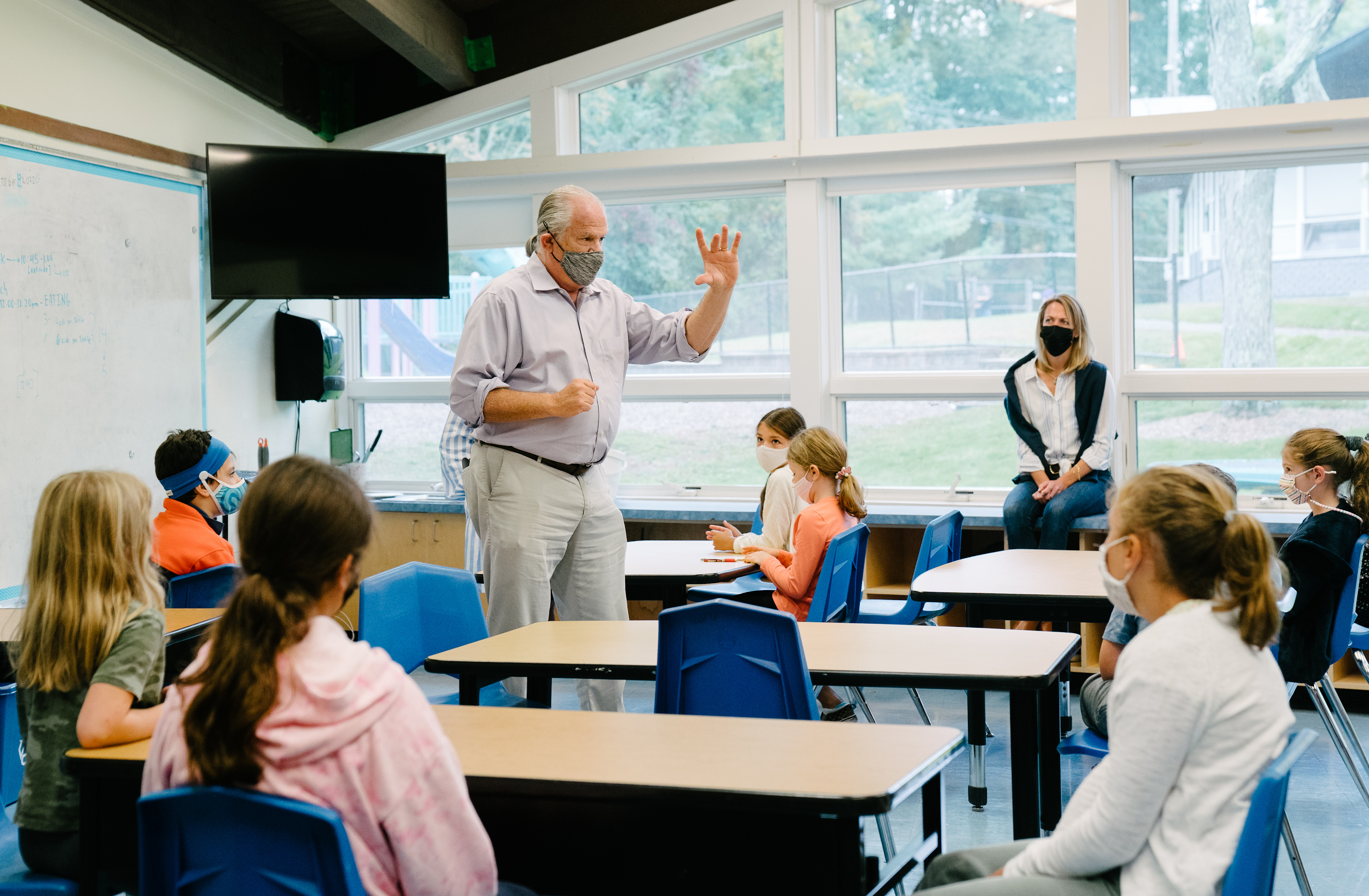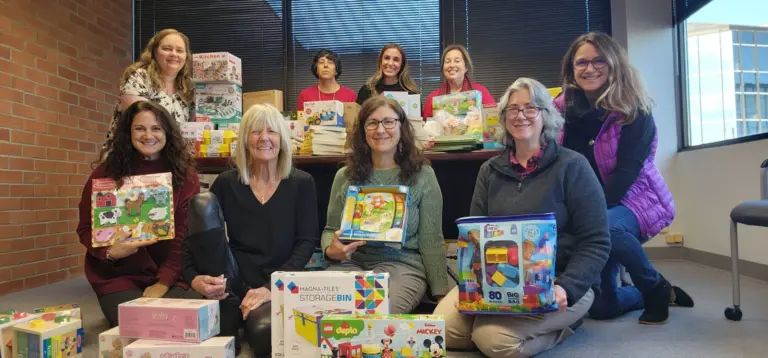
By Anjali Kishore
Since its founding in 1969, Stamford’s Mead School has always taken an unconventional approach to learning, incorporating founder Dr. Elaine de Beauport’s neurological research and medical background in the design of the school’s curriculum and educational environment. Now, the progressive private K – 8 school is in the hands of Peter Herzberg, a longtime member of the school’s board and experienced administrator, with stints in leadership positions at the Brearley School in New York City and Greens Farms Academy in Westport, among others. “He’s all about student engagement and innovative curriculums, which is what matches up with us so well,” says Jeanette Baxendale, Herzberg’s executive assistant and director of marketing.
His presence at Mead began when he was at Greens Farms, a private high school that typically takes on kids from similar area private K – 8 schools. He noticed a singularity about the kids coming from Mead, jokingly calling them “a glorious pain – they don’t easily defer to authority,” said Herzberg, “and that’s by design. At Greens Farms, I found that they tend to push their teachers.” While he’s worked at 8 schools over his career, Herzberg says that the students at Mead are unlike any others that he’s come across, describing them as “some of the most idiosyncratic and interesting kids that [he’d] met.”
There’s a number of things that contribute to the unique character and learning style of the typical Mead student, with both Herzberg and Baxendale emphasizing the importance of expressive arts, small class sizes, and the school’s trademark flexible curriculum to fostering an environment of creativity and individuality. The school has no grades, opting to assess student’s progress through hands-on projects and written reports. These projects often integrate the expressive arts: for example, one physics class designed wooden cars for aerodynamic efficiency as well as artistic expression, and in an English class students constructed their own endings to the book they were reading before the class finished it and performed their endings on stage. “We’ve always believed that the expressive arts and turning on different parts of the brain through hands-on experience really ignite the child’s ability to learn in a different way. We really try to focus on each child and work with them to bring out the best in what they can do so they can be successful,” says Baxendale.
This individualized approach stems from de Beauport’s research, which indicated that a “a small class environment with really strong foundations and relationships with teachers and digging into students’ individual passions is really important for students to be able to be open to learning”, according to Baxendale. The small class size is key to the school’s character, in which each student receives a much higher level of attention and freedom to explore different academic and artistic disciplines. Though students may pick up habits at school, the open-minded, flexible approach taught at Mead tends to carry on even beyond school. In Herzberg’s experience, Mead alumni tend to pursue more creative paths than their counterparts in more traditional environments: namely, less finance. Throughout our conversation, he mentioned a ballet company owner, the New York Times’ new night editor, and a smattering of software engineers and entrepreneurs.
The eclectic entrepreneur, too, laments Herzberg, is becoming a bit of a trope. In fact, he’s seen a lot of Mead’s approaches taken into the mainstream, namely social-emotional learning. It’s a cornerstone of Mead’s philosophy that many schools have picked up in recent times to address the extra mental health burden of isolation and stress induced by the pandemic. As Baxendale puts it, “Because our kids get that special individualized attention early on in education, they are able to grow and get a good sense of self – we always focused a lot on social emotional learning and how it affects students academically. I would not want to go back to my middle school, but the students and alums say wonderful things about their experience and how it helped them move on.”
Herzberg comes into the position of Head of School with the goal of staying ahead of the curve, further pushing the boundaries of pedagogy for Mead students. A number of initiatives are underway: programs to support nontraditional learners, who are critical to Mead’s goal of introducing students not only to a plethora of academic disciplines but also a richly diverse student body; a new and improved social studies curriculum; and the development of the school’s interdisciplinary approach. “We’re finding now that learning, whether it be on things like the climate crisis or racial justice, needs to be much more interdisciplinary and our disciplines have to be more integrated in order to solve some of these problems. You can’t just keep testing kids in one discipline at a time, with these little packets of knowledge,” explains Herzberg, “We’re a very interwoven, integrative school. We want to create problem solvers, so we need to work on breaking down the borders between disciplines. Something we like to say is that we rarely teach kids what to think, but rather how to think, which is really important.”
For further inquiries, contact Mead School




